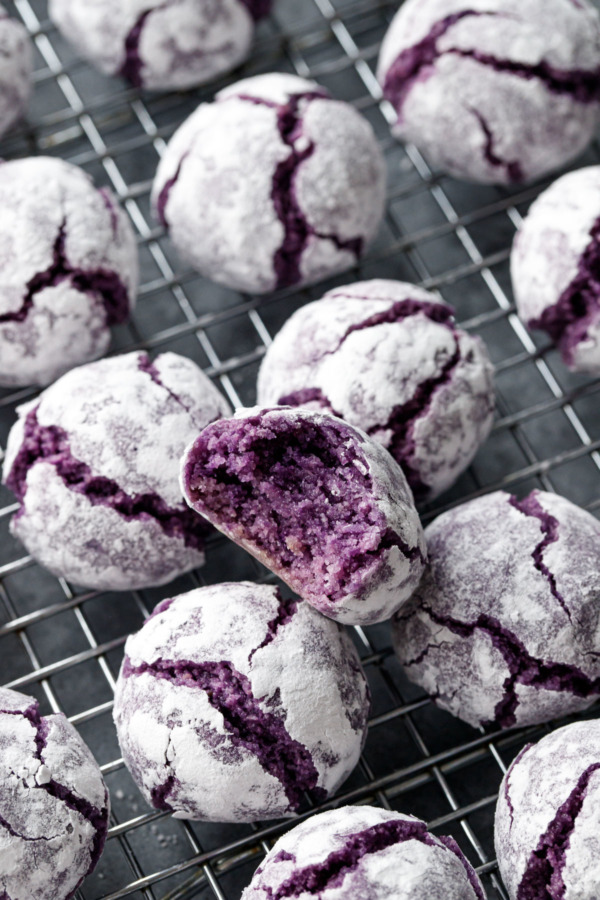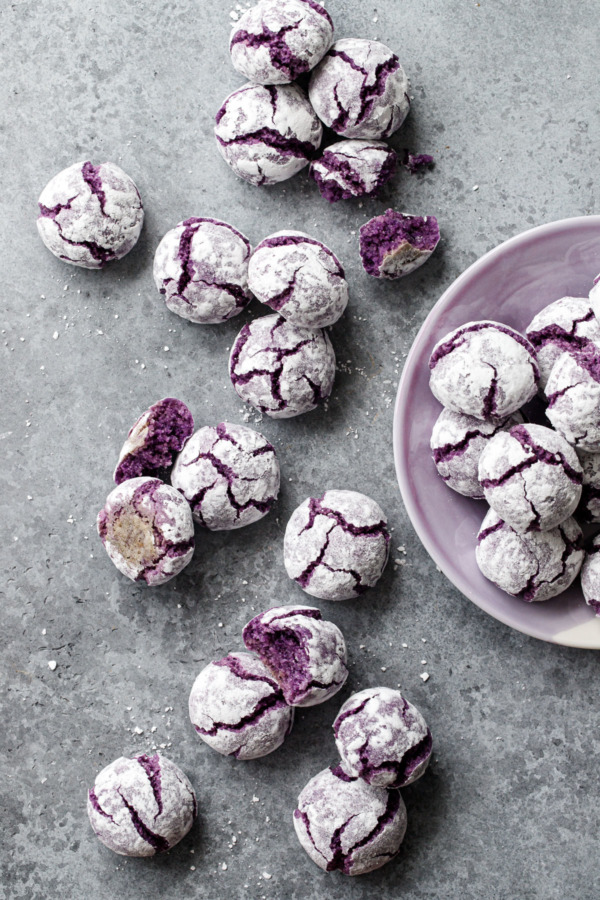These soft and chewy, cheerfully crinkly and perfectly purple ube amaretti are a delight to behold (and to eat!)
Easy to make and naturally gluten free, amaretti cookies are an almond-lover’s delight. This violet variation features ube extract (purple sweet potato) for a unique color and flavor.
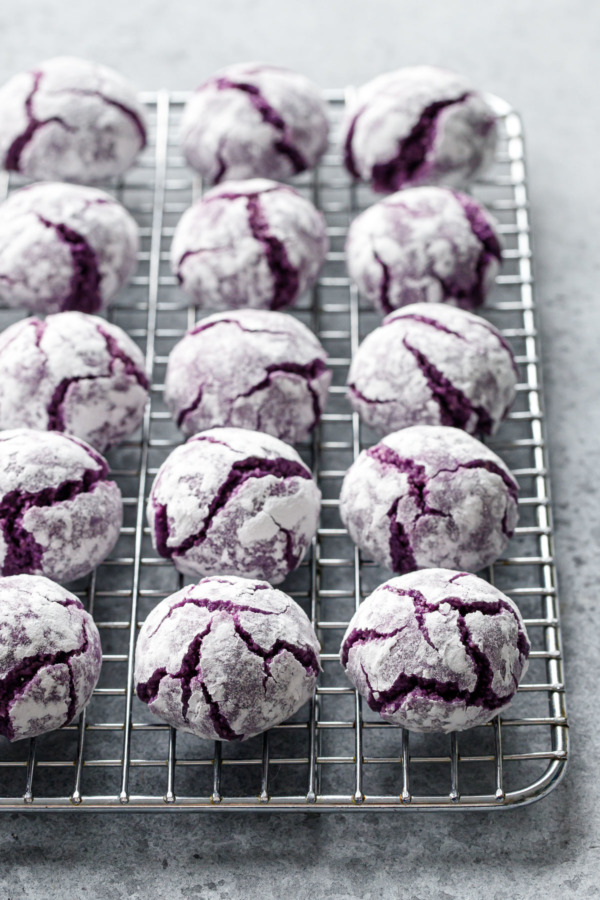
Amaretti or not, here I come…
…with yet another flavor variation of my favorite soft and chewy amaretti cookies: this time featuring ube!
I know, I know. I’ve already got 10 other amaretti cookie recipes, and ube makes 11.
But truly, how many is too many amaretti? Is there such a thing?
I’m probably wearing out my welcome with amaretti recipes at this point, but let’s be honest, I wouldn’t keep making them if you all didn’t love them so. Or if I didn’t love them equally. Or if they weren’t so darn easy and satisfying, not to mention impressive.
At this point I may as well finish out the rainbow, right? (Just need to figure out the orange and blue flavors, we’ll count the originals as yellow although I dare say a lemon amaretti would be rather lovely.)
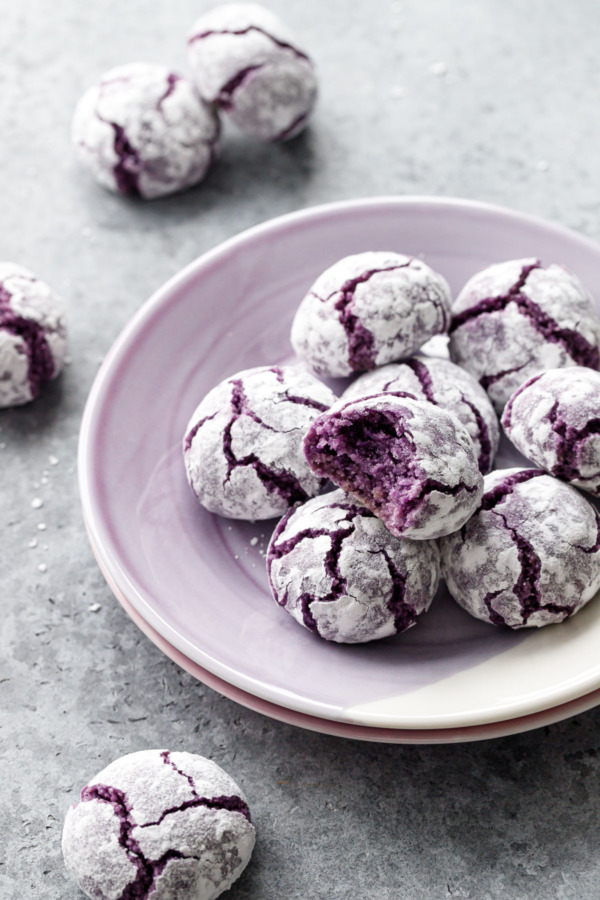
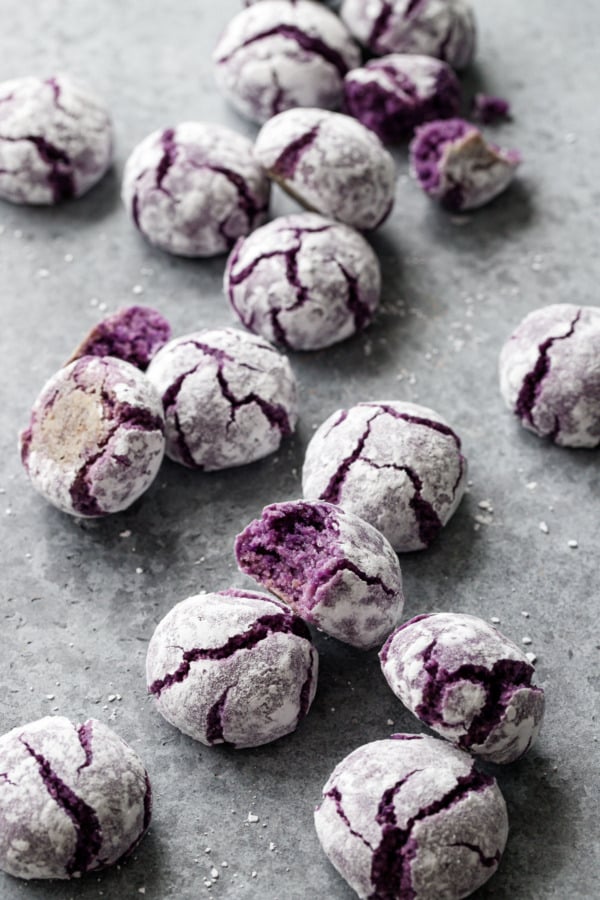
What is Ube?
Ube is a variety of purple yam originally from the Philippines. It is commonly used in desserts throughout Southeast Asia, often cooked down with sugar and condensed milk to make a creamy, sweet jam called ube halaya.
Despite the fact that ube is often labeled as purple sweet potato, it’s actually a yam. Don’t confuse it with other varieties of purple sweet potatoes (such as Japanese purple sweet potatoes or the Stokes variety from the US), which are much starchier, with a flavor that’s more similar to their orange counterparts. (Will Americans ever get their yams and sweet potatoes straight? Unlikely.)
Ube, if you’ve never tried it before, is a unique flavor in and of itself: mellow and slightly nutty with hints of coconut and vanilla. It’s a flavor that, in this case, pairs beautifully with almond. And unlike almond extract, which amplifies sweetness, I found ube extract to have the opposite effect: I almost wanted to add more sugar to these cookies. Even with identical proportions, I found them much less cloying than the original amaretti.
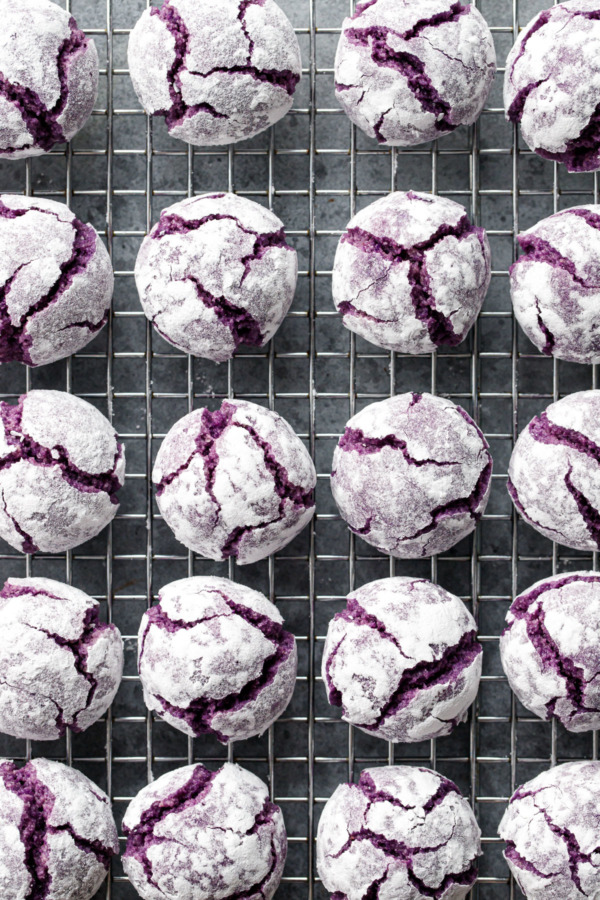
I tested these perfectly purple crinkle cookies multiple times, way more than I expected considering the final iteration is nearly identical to the original, just with a bit of ube extract mixed in. (I should know better by now, you don’t mess with a good thing!)
Fresh ube is not easy to come by here in the US (in our neck of the woods at least). If you’re lucky you can maybe find it frozen. Otherwise the most common forms of ube are extract, powder, or jam (ube halaya).
While I didn’t this recipe using jam (the excess moisture content would make for a very different recipe), I did test it with both ube extract and ube powder in various forms.
For my first batch, I used a coarse ube powder that, I realized later, was intended to be cooked and rehydrated to make ube jam. Unfortunately, while they tasted good, the texture was… rather gritty. And since one of the defining features of these cookies is the chewy, marzipan-like texture, anything that negatively affected that texture is a definite no-go in my book.
So I ordered a few different kinds of ube powder, looking for brands that seemed to be finer and more dissolvable (if the powder said it could be used to make ube-flavored drinks, I figured it’d be more appropriate for these cookies). Unfortunately, even though these powders weren’t at all gritty, they still imparted a somewhat starchy texture to the cookies that I just didn’t love.
Six half batches of cookies later… we unanimously decided that the extract-only version was the winner. (At the very least I made a solid dent in my freezer stash of egg whites left over from all my summer ice cream experiments, so that was a plus at least.)
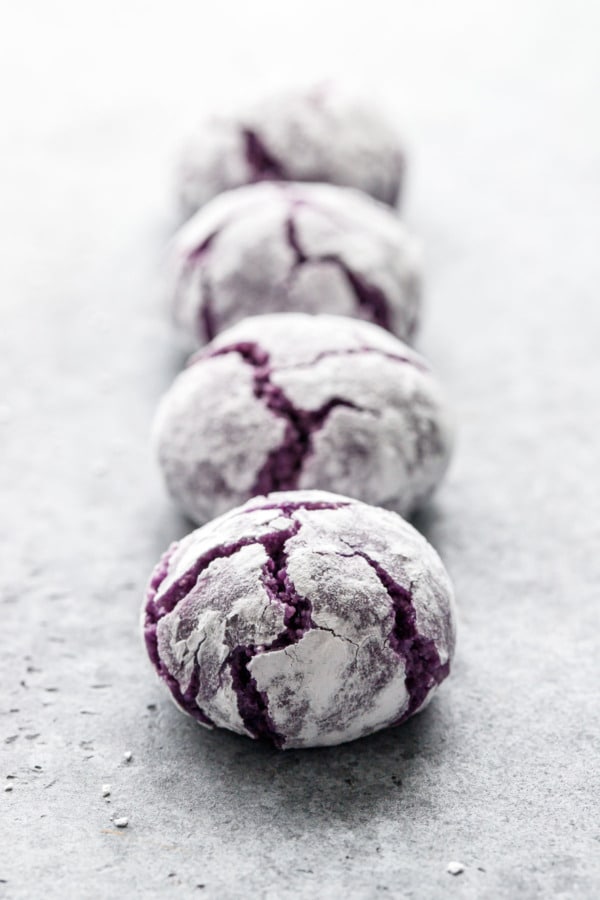
I still did one more test run to prove my hypothesis that a bit of baking powder helped the cookies crack more (spoiler: it does!) I know I get occasional comments on my other amaretti recipes that the cookies didn’t crack as much as mine did, and that’s usually a result of overall moisture (usually a drier brand of almond flour or over-measured almond flour).
Baking Tip: For any of my amaretti recipes: adding 1/4 teaspoon of baking powder will produce wider and more defined cracks.
Adding more than 1/4 teaspoon will cause the cookie to spread quite a bit more, and while I loved the chewiness of this batch, the texture was almost too light, so much so that I missed the marzipaniness of it.
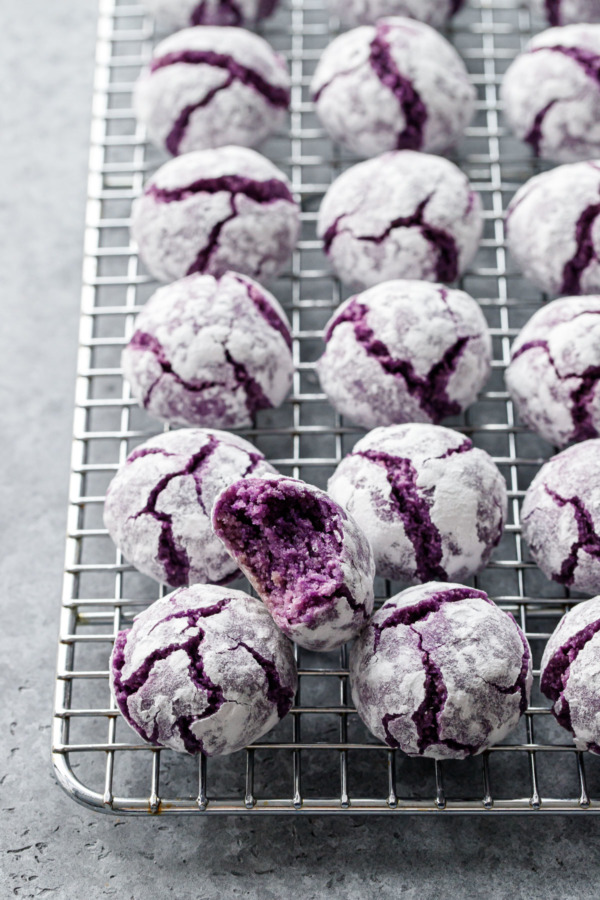
Extract, Extract! Read all about it!
Ube extract can easily be found online, or if you have a market that carries Filipino or Southeast Asian ingredients you’ll probably be able to find it there. McCormick is the brand I used, Butterfly is another common one that’s slightly thicker but otherwise pretty similar.
The extract is both flavoring and color, so, unlike all my other amaretti recipes, I can’t claim this one is naturally colored. I have yet to find an ube extract without artificial coloring, it seems to be par for the course (but if you know of one please let me know). That said, a little bit goes a long way, just 1 1/2 teaspoons is more than enough to flavor and color an entire batch.
Just… please keep it away from your light-colored countertops. Or clothing. Or anything else that you don’t want stained vibrantly purple. Just trust me on this one, ok?
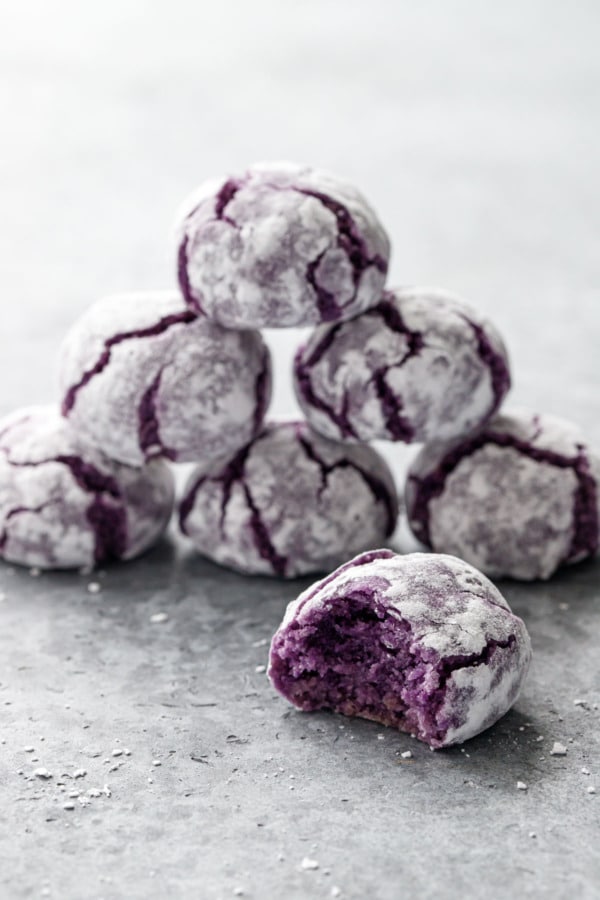
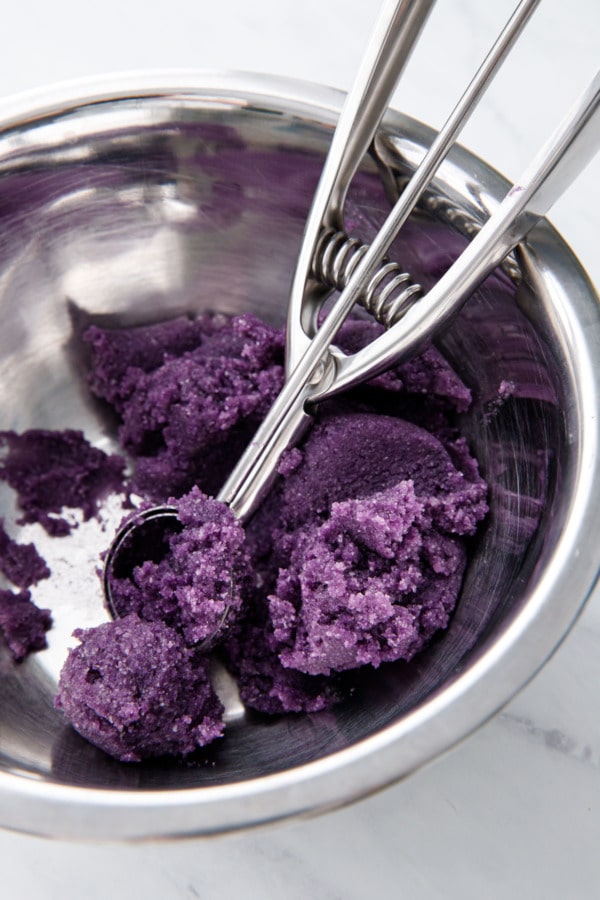
Double Up
As with all my other amaretti recipes, I recommend baking these cookies on two stacked cookie sheets. The additional cookie sheet provides some extra insulation on the bottoms, preventing them from getting too brown before the rest of the cookie can cook through. I also recommend heavy-weight, light-colored cookie sheets for the same reason.
If you don’t have two identical cookie sheets, you can drop the oven temperature by 15 or 20 degrees, which should give you a few extra minutes of baking time before the bottoms start to brown (this low and slow bake is what gives the cookies their chewy exteriors and soft, marizpan-like middles).
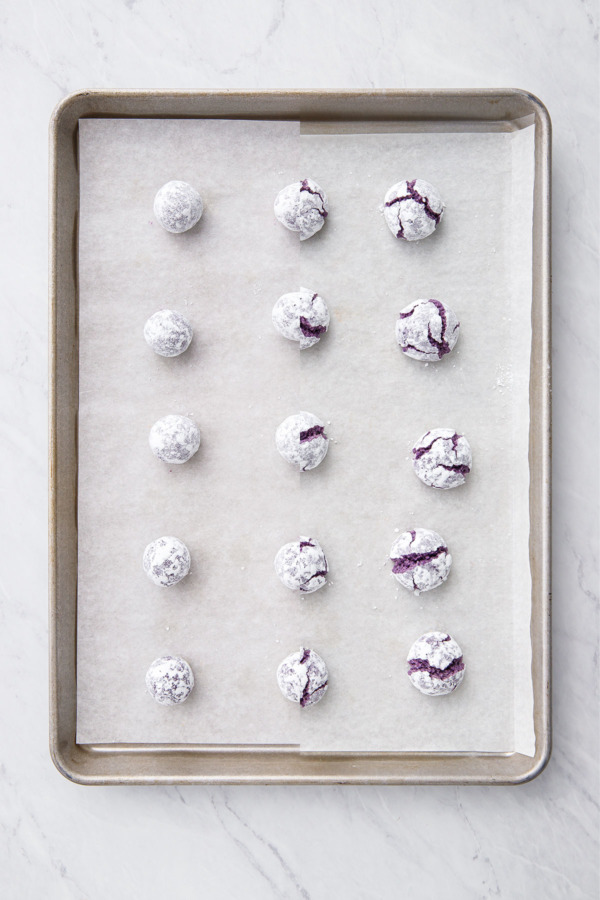
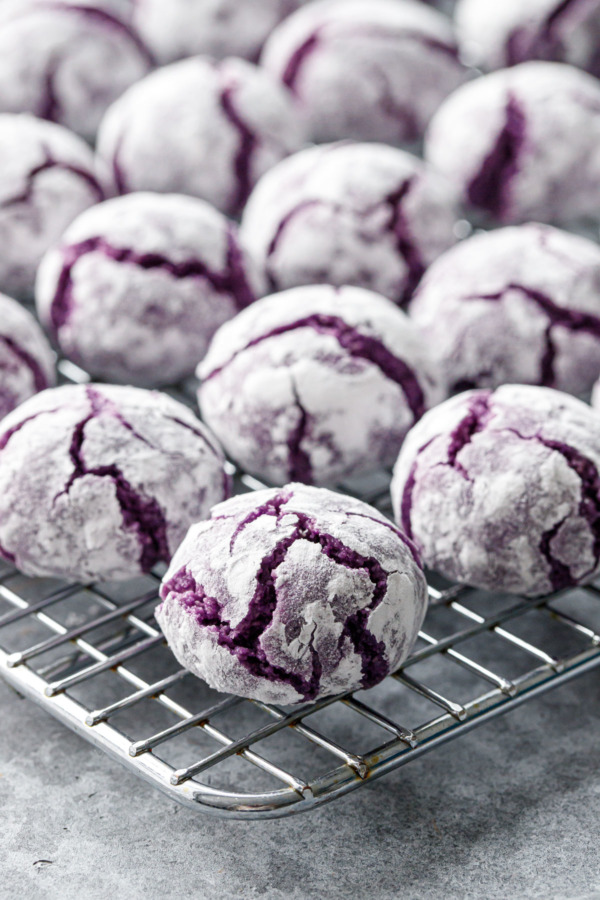
Freezing & Storage
Amaretti cookie dough can be frozen prior to baking, and they can be baked straight from frozen (you can re-coat them with a bit more powdered sugar if necessary). Give frozen cookies an additional 3 to 5 minutes to bake.
While amaretti cookies will dry out if left out in the open air, they keep quite well in an airtight container, or even vacuum sealed if shipping across the country (my sister out in SF gives her approval… what, do you think the two of us actually ate 6 dozen amaretti? Of course not. We’re pros at sharing at this point.)
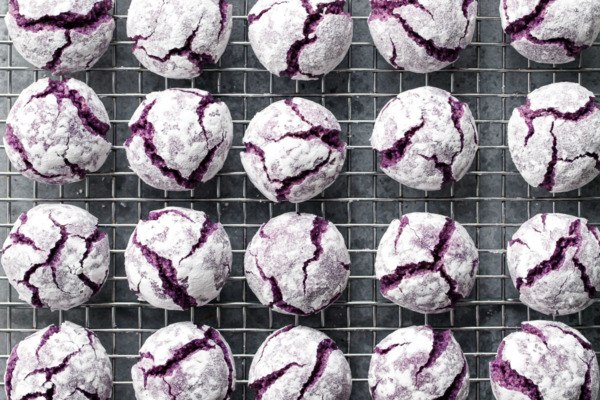
Ube Amaretti Crinkle Cookies
Easy to make and naturally gluten free, amaretti cookies are an almond-lover’s delight. This violet variation features ube extract (purple sweet potato) for a unique color and flavor.
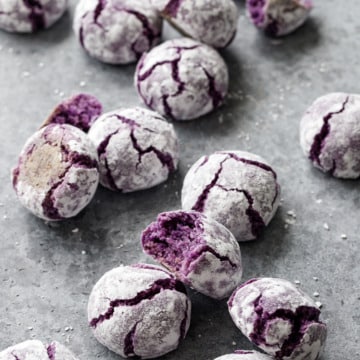
Ingredients:
- 2¼ cups (200g) almond flour or very finely ground almonds, sifted
- 7/8 cup (180g) granulated sugar
- ¼ teaspoon baking powder
- pinch fine sea salt
- 2 large egg whites (about 65 grams)
- ¼ teaspoon lemon juice
- 1½ teaspoons ube extract
- confectioners’ sugar, as needed
Directions:
- Preheat oven to 300 degrees F. Stack two matching, heavyweight, light to medium colored cookie sheets one inside the other (stacking two cookie sheets together keeps the bottoms of the cookies from getting too brown). Line with parchment paper or a silicone baking mat.
- In a large bowl, whisk together almond flour, sugar, baking powder, and salt until evenly incorporated.
- In a mixing bowl or the bowl of a stand mixer fitted with the whisk attachment, whisk egg whites and lemon juice until they hold soft peaks.
- Add beaten egg whites and ube extract to dry ingredients and stir until mixture forms a soft, sticky dough, kneading with your hands if necessary.
- Lightly dust your hands with powdered sugar. Use a small cookie scoop to portion dough into 1-inch balls. Roll into a smooth ball, then roll in powdered sugar. Arrange on parchment or silicon-lined baking sheets, leaving 1 inch of space between cookies.
- Bake for about 26 to 30 minutes until tops are cracked and bottoms are just barely starting to brown (if you are not using doubled cookie sheets the bottoms will brown much quicker, so watch them closely). Remove from oven; let cool a few minutes, then transfer to wire racks to cool completely.
- Cookies will keep at room temperature in an airtight container for up to 5 days.
Did you make this recipe?
Let us know what you think!
Leave a Comment below or share a photo and tag me on Instagram with the hashtag #loveandoliveoil.
